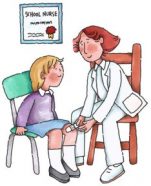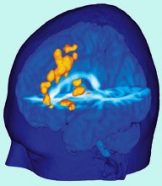Pain expectations
How painful you expect something to be beforehand can affect how you actually feel when you're hurt.
By Emily Sohn
If you touch your finger to a hot stove, you know it’s going to hurt. If you convince yourself beforehand that the pain won’t be so bad, though, you might not suffer as much.
According to a new study, the part of your brain that reacts to severe pain is largely the same part that reacts to simply anticipating what the pain will feel like before it comes.
 |
|
Because of the way your brain seems to work, how painful you expect an injury to be beforehand can affect how you actually feel when you’re hurt.
|
For the study, researchers from Wake Forest University School of Medicine in Winston-Salem, N.C., worked with 10 volunteers, ages 24 to 46. Each volunteer wore a device that delivered 20-second-long pulses of heat to the lower right leg. There were three levels of heat, which produced mild, moderate, or strong pain in the leg, but none burned or damaged skin.
During training, the volunteers learned to associate the length of time between a tone and the heat pulse with the intensity of the pulse. A 7-second interval meant that the heat would be mild. A 15-second interval meant the heat would produce moderate pain. A 30-second lag meant the pain would be severe.
A day or two later, the real experiment began. While connected to a scanner that measures blood flow in the brain, the volunteers went through 30 heat-pulse trials. About one-third of the time, the scientists switched signals so that participants received a different level of pain than they had learned to expect for a given time interval.
 |
|
Yellow patches in this brain scan show areas that become active in volunteers waiting for a painful heat pulse. Most of the same areas show up in response to the actual pain.
|
| Robert C. Coghill, Wake Forest University School of Medicine |
The researchers found that the parts of the brain involved in learning, memory, emotion, and touch became more active as volunteers expected higher levels of pain. These were mainly the same areas that became active when participants actually felt pain.
Interestingly, when volunteers expected only mild or moderate pain but experienced severe pain, they reported feeling 28 percent less pain than when they were expecting severe pain and actually got it. The relief in these scenarios was the same as if they had taken a powerful, pain-killing drug known as morphine.
When volunteers expected more pain than they received, on the other hand, they didn’t actually feel more pain.
The new study emphasizes that pain has both physical and psychological elements. Understanding how pain works in the mind and brain could eventually give doctors tools for helping people cope with painful medical treatments. And your next round of shots could be misery-free.







